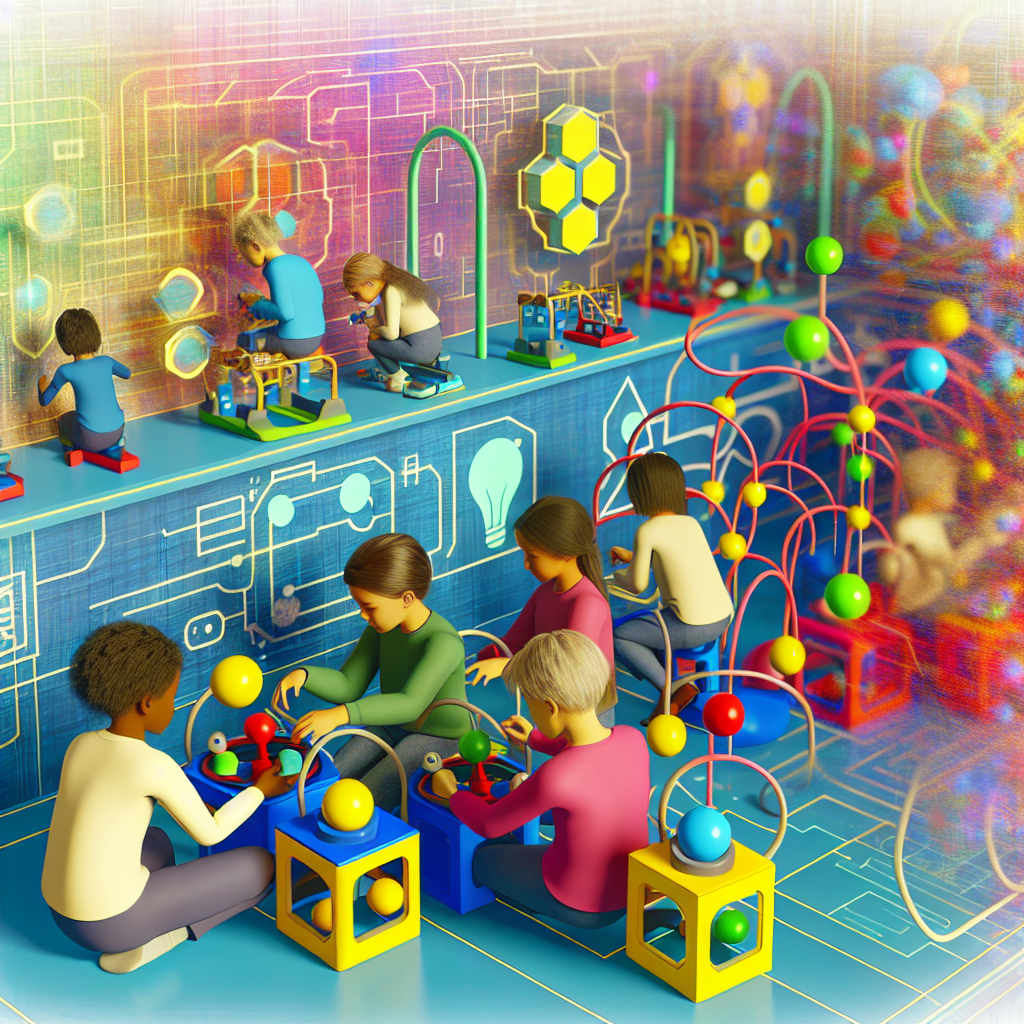Quantum Computing Playsets: How STEM Toys Are Preparing Under-10s for the AI Future
Introduction
In the ever-evolving technological landscape, the education of young children is undergoing a radical transformation. As artificial intelligence (AI) and quantum computing begin to shape global industries, the necessity of early exposure to these complex concepts is becoming increasingly clear. Affluent parents seeking the best intellectual foundations for their children are turning to cutting-edge STEM toys—an emerging category that now includes quantum computing playsets aimed at fostering computational thinking, problem-solving, and future-proofed skills before the age of ten.
STEM education (science, technology, engineering, and mathematics) has been at the forefront of child enrichment for years, but with the rapid growth of AI, the need for quantum literacy has never been more critical. Many tech experts argue that understanding the fundamental principles of quantum mechanics—such as superposition, entanglement, and probability—could provide children with insights into the next-generation computing revolution.
More significantly, these toys encourage children to develop a computational mindset rather than rely solely on rote learning. New quantum playsets designed for children enable hands-on experimentation with quantum circuits, logic gates, and probability-based computing through interactive, gamified experiences. These toys not only aim to make quantum concepts accessible to young minds but also nurture problem-solving, logical reasoning, and creativity, essential skills for thriving in an AI-driven future.
For parents who value elite educational opportunities, the stakes are high—children exposed to early quantum mechanics and AI-based learning experiences may possess a distinct advantage in tomorrow’s workforce. The most prestigious universities and global tech firms are already investing heavily in quantum fields, and exposing children to these skills at a young age could lay the groundwork for future leadership roles in science, innovation, and technology. As policymakers debate widespread educational reforms, exclusive, high-quality STEM toys are becoming an essential tool for forward-thinking families, providing their children with an unparalleled head start in understanding the AI-driven world of tomorrow.
In this article, we explore the pioneering realm of quantum computing playsets and their influence on early cognitive development. We’ll discuss relevant scientific research supporting STEM learning in early childhood and showcase how these innovative tools might serve as a gateway for under-10s into the AI-dominant future.
How STEM Toys and Quantum Computing Playsets Are Transforming Cognitive Development
Scientific research supports the idea that early exposure to STEM learning significantly improves cognitive abilities, problem-solving skills, and future academic performance. Studies highlight that children who engage in computational thinking at a young age perform better in mathematics, cognitive flexibility, and complex reasoning later in life. With play-based approaches, quantum computing playsets have the potential to transform abstract computing principles into tangible, hands-on experiences for young learners.
The Next Leap Beyond Traditional STEM Toys
Traditional STEM toys—such as coding robots, electronic circuit kits, and math-based games—have long been known to enhance logical reasoning and promote problem-solving. However, quantum computing playsets take this a step further by introducing probabilistic computing and multidimensional logic, reflecting the real-world operations of quantum computers.
A 2021 study published in the Journal of Science Education and Technology found that early engagement in STEM-based cognitive challenges enhances metacognitive abilities in young learners (Source). These skills directly correlate with abilities needed for quantum computing, such as pattern recognition, probability analysis, and parallel processing.
Neuroscientific Evidence on Early STEM Learning
Neuroscience research indicates that children’s brains are incredibly plastic and adaptable, particularly in the first decade of life. According to a landmark study from Harvard University’s Center on the Developing Child, hands-on STEM activities stimulate the prefrontal cortex, responsible for critical thinking, reasoning, and problem-solving (Source). Introducing algorithmic thinking and multidimensional problem-solving through quantum-based playsets may foster enhanced neural flexibility, an essential trait in an age where AI and automation are reshaping industries.
Preparing Children for an AI-Centric Economy
The demand for a future workforce proficient in AI, quantum computing, and data science continues to increase. The World Economic Forum (WEF) 2023 Future of Jobs Report emphasized that analytical thinking, technological literacy, and complex problem-solving will be among the most sought-after skills by 2030 (Source).
By engaging with quantum computing playsets, children are developing a foundation in probabilistic reasoning—essential for AI learning models and generative computing processes. Well-crafted STEM toys introduce concepts behind quantum gates, qubits, and entanglement through play, allowing young minds to become comfortable with advanced computational paradigms before encountering them formally in education.
Play-Based Learning: Boosting STEM Retention for Young Minds
Research consistently shows that play-based learning solidifies abstract concepts effectively by engaging children in active discovery. A recent study in the International Journal of Child-Computer Interaction found that educational toys improve knowledge retention by up to 70% compared to passive instruction (Source).
Quantum computing playsets align perfectly with these findings by making otherwise dense computational theories interactive and tactile. Whether manipulating quantum gates via digital apps, exploring pre-coded scenarios, or engaging in physical board games employing probability mechanics, children can better grasp the quirks of quantum physics in an unintimidating, fun manner.
Conclusion: The Future Belongs to STEM-Savvy Young Innovators
For affluent parents seeking to future-proof their children, quantum computing playsets represent more than just educational toys; they are a bridge to the next frontier of innovation. As AI and quantum science reshape industries, ensuring children develop critical computational skills from an early age will provide them with a significant advantage. Scientific research underscores that early STEM exposure enhances cognitive abilities, problem-solving skills, and neural adaptability, all of which are crucial in an increasingly AI-driven world. Investing in high-quality quantum learning tools today may position children as the tech leaders, innovators, and cognitive pioneers of tomorrow.
Summary:
Quantum computing playsets are emerging as a powerful tool to prepare young children for the AI-driven future. These STEM toys introduce complex concepts like quantum mechanics, probabilistic computing, and multidimensional logic through interactive, play-based experiences. Research shows that early exposure to such computational thinking significantly enhances cognitive abilities, problem-solving skills, and neural adaptability – essential traits for thriving in an increasingly automated world. By investing in these innovative learning tools, affluent parents are positioning their children as future tech leaders and cognitive pioneers.
References:
– [Harvard Center on the Developing Child](https://developingchild.harvard.edu/resources/three-core-concepts-in-early-development/)
– [World Economic Forum](https://www.weforum.org/reports/the-future-of-jobs-report-2023)
– [Journal of Science Education and Technology](https://link.springer.com/article/10.1007/s10956-021-09908-7)
– [International Journal of Child-Computer Interaction](https://www.sciencedirect.com/science/article/pii/S2212868921000721)

Dominic E. is a passionate filmmaker navigating the exciting intersection of art and science. By day, he delves into the complexities of the human body as a full-time medical writer, meticulously translating intricate medical concepts into accessible and engaging narratives. By night, he explores the boundless realm of cinematic storytelling, crafting narratives that evoke emotion and challenge perspectives. Film Student and Full-time Medical Writer for ContentVendor.com




